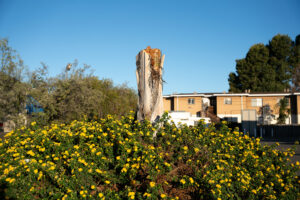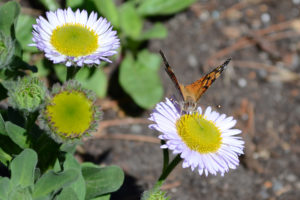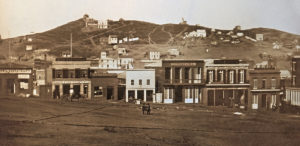You may have heard of Walk Score, the walkability index that everyone from real estate agents to smart growth advocates use to assess how pedestrian friendly the area is around a specific address.
Well, joining the ratings stage now is Street Nature Score, which is attempting to do the same sort of thing but with “nature” – greenery, undeveloped land, and water bodies – as the index.
Punch in an address and you get a score, anywhere from “concrete jungle” to “nature paradise.”
Designer Jeremy Faludi launched the site in San Francisco and Seattle with the aim to give metrics to what has typically been a very visceral reaction to a place.
“People think they want a greener neighborhood, but there’s never been a way to say I want a neighborhood that has a 40 percent tree canopy,” Faludi said. “I wanted to start measuring this as a first step for improving it.”
The index runs an algorithm over aerial images to generate 30 meter by 30 meter pixels that are scored by percentage of hardscape versus nature-scape. The result is a street nature score: the average of all data pixels within a 100 meter (0.6 mile) radius of the address, or roughly the length of a typical short city block. The neighborhood nature score averages data within a 1.5 km (1 mile) radius.
Sadly, many neighborhoods that rank high on Walk Score are much lower when it comes to Nature Score, underscoring one of the main challenges cities face. Cities are often bastions of concrete, despite being far more sustainable than the leafy suburbs where many people retreat to ostensibly be nearer to nature.
Faludi believes that urbanites should not have to give up nature, and all the benefits it brings, to live an environmentally friendly lifestyle.
“I don’t want people to be living greener out of a sense of duty or deprivation,” he said. “I want the sustainable choice to be the natural choice, the beautiful choice. That’s really the only way we can get the whole world living sustainably.”
Faludi said he got the idea for Nature Score after moving from San Francisco to Seattle. He noticed how greener his new home is. Despite San Francisco’s more arid climate, he believes it could be greatly improved.
“It’s just a matter of how the city is designed. You could absolutely have as many trees in San Francisco if the city and its residents wanted to,” he said.
One of the benefits to more nature is higher property values. Not that San Francisco needs yet another force driving up real estate, but it’s good to know that money and trees often go hand and hand. Homes near greenbelts are 32 percent higher value, while consumers spend up to 12 percent more in business districts with extensive nature, according to a 2007 study.
“It takes a surprisingly low percentage of nature to feel really green,” he said. “Neighborhoods in Seattle that are super green feel like almost walking through a park, but they’re only 50 to 60 percent nature by land area.”
So don’t get too bummed if your personal green oasis seems appallingly low. Places like Golden Gate Park or the Presidio are going to steal the show as the highest, but they’re parks.
Faludi hopes to make some cash himself off the site by selling the index to real estate companies to feature on their listings, similar to what Walk Score does. Once that happens, he plans to expand to other cities.
“I want this to be as popular as Walk Score,” said Faludi.





